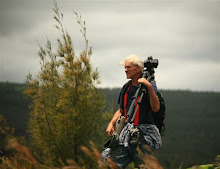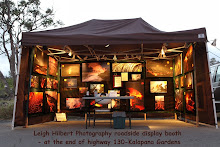 Pu`u O`o Crater floor collapsing March 5th, 2011 -Photo USGS (Fissure eruption photos further down)
Pu`u O`o Crater floor collapsing March 5th, 2011 -Photo USGS (Fissure eruption photos further down) Deformation tiltmeter graph shows the extreme magma pressure drop
Deformation tiltmeter graph shows the extreme magma pressure drop Halema`uma`u Crater pit vent as it looked tonight at 8:00PM. This is a major drop in levels when compared with where it has been, as in the image below.
Halema`uma`u Crater pit vent as it looked tonight at 8:00PM. This is a major drop in levels when compared with where it has been, as in the image below.Below: The crater with high lava stand a few days ago:

Halema’uma’u overlook cam
USGS/HVO report issued at 5:39 PM today, March 5th, 2011: (I normally do not place USGS reports on my blog but this is big news for us here! ;)
March 5th, 2011 special USGS Kilauea status report copied and pasted in part below (1st report):
“Volcanic Activity Summary: At 1:42 p.m. this afternoon, HVO instruments indicated the onset of rapid deflation at Pu'u 'Ō'ō and increased tremor along Kīlauea's middle east rift zone. At 2:00 p.m., Kīlauea's summit began to deflate.
Between 2:16 and 2:21 p.m., the floor of the Pu'u 'Ō'ō crater began to collapse, and within 10 minutes, incandescent ring fractures opened on the crater floor a few tens of meters away from the crater wall. As the floor continued to drop, lava appeared in the center of the crater floor, the NE spatter cone collapsed, and an obvious scarp developed on the west side of the crater floor, with lava cascading over the scarp toward the center of the crater.
At 2:41 p.m., the scarp on the west side of the crater floor appeared to disintegrate, exposing incandescent rubble, and the lava in the center of the crater enlarged.
At 2:46 p.m., the collapse of a large block along the east crater wall produced a dust plume and the lava continued to enlarge.
Webcam images showed that the Pu'u 'Ō'ō crater floor continued to drop through 4:26 p.m., when fume obscured the camera view.
Coincident with the collapse, an earthquake swarm began along Kīlauea's middle east rift zone in the area of Maka`opuhi and Nāpau craters. Tiltmeters in this area show continued deflation.
At 5:15 p.m., an HVO geologist flying over Kīlauea's middle east zone reported "an eruption in Napau Crater." When more is known about this eruption, an updated status report will be posted.
Kīlauea's summit continues to deflate. The lava lake level within the Halema'uma'u Crater vent continues to drop, facilitating rockfalls from the vent wall.
Daily updates on Kilauea's ongoing eruptions (summit and east rift zone) will be posted each morning. These will be supplemented by additional status reports and updates as warranted.
Maps, photos, Webcam views, and other information about Kilauea Volcano are available at http://volcanoes.usgs.gov/hvo/activity/kilaueastatus.php.
The Hawaiian Volcano Observatory is one of five volcano observatories within the U.S. Geological Survey and is responsible for monitoring volcanoes and earthquakes in Hawai`i.
Recent Observations:
[Volcanic cloud height] Unknown
[Other volcanic cloud information] Unknown”
End of USGS report (Be sure to see their full report and future ones on their main site HERE
Below, RAW USGS photos of Napau Crater adjacent fissure eruption located between Pu`u O`o and Napau Craters on March 5th, 2011:
 -Photo USGS
-Photo USGS -Photo USGS
-Photo USGS -Photo USGS
-Photo USGSSpectacular RAW USGS video movie clips of the Napau Crater and adjacent violent fissure eruption, March 5th, 2010 in the late afternoon:
Napau eruption site video clip 0672 March 5, 2011 March 5th, 2011
clip 0671 March 5th, 2011 Unbelievably risky filming on this one!
clip 0668 March 5th, 2011
~~~~~~~~
The last time the Napau Crater erupted was in late January 1997 and the Pu`u O`o Crater collapsed inside then as it is doing right now. The Napau eruption was short-lived only lasting three days, then lava returned up by Pu`u O`o. That 1997 event took place at nearly the same time of year as our current one. Here is one short article on that episode. Here is a rough map from 1998 showing the location of the Napau Crater in relation to Pu`u O`o and Kalapana.

Meanwhile, I did post a late day blog of the coastal surface flows (below this one). These surface breakouts will likely continue flowing for a few days to a week before they stop from lack of feeding lava from the eruption site near Pu`u O`o Crater.
I will post updates on that as the days unfold, but for the big action on volcano keep track of the USGS/HVO Update Status site and their IMAGES page.










Wow! Exciting happenings. Usually I'm just a lurker around your blog, Leigh, but I wanted to say thanks for your updates, photos, and compiling the best of the USGS coverage, too. I love the pahoehoe photo from your previous update. Hope all the lava watchers are enjoying the show.
ReplyDeleteI got really nervous (I live on Kauai) seeing the latest updates, but finding your blog helped me understand better than the science-heavy stuff in the official status updates. We only moved to Hawaii last year, so we're new to the whole volcano thing. I've bookmarked your blog and will reference it first!
ReplyDeleteIf things get really bad, you will post a "Get The Heck Out" update, right? :)
Great updates! Thank you so much!
ReplyDelete